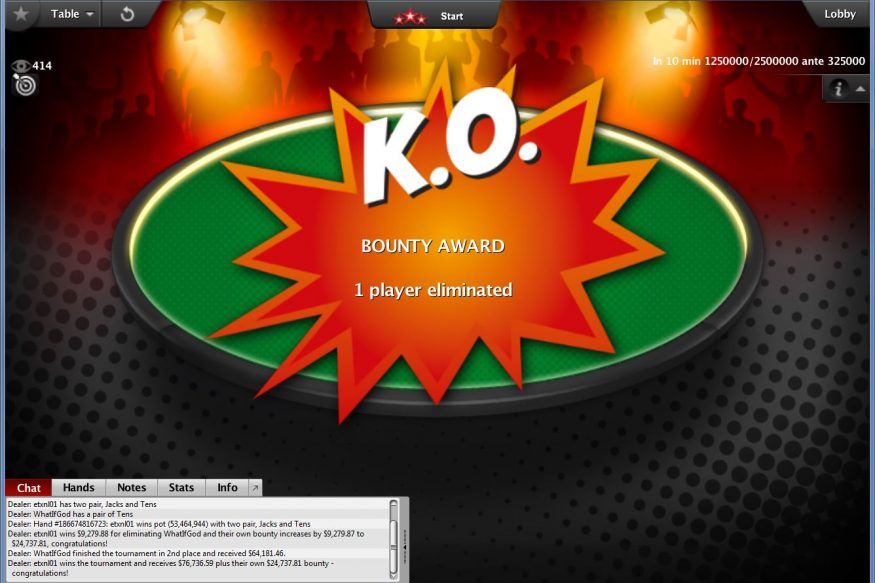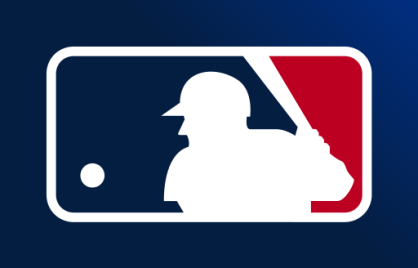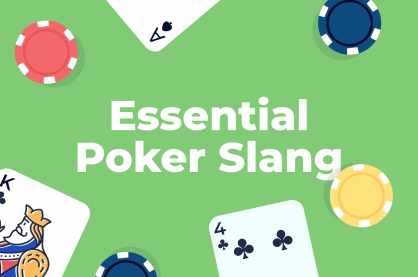PKOs: The Pros, Cons, And Best Strategies To Gain An Advantage

Progressive knockout tournaments, or PKOs as they are often referred to, have become quite popular in recent years. Expanding on the concept of regular knockouts, these events feature increasing bounties, making them quite entertaining to play.
However, such a structure requires certain strategic adjustments, so in this article, you’ll learn everything you need to know about PKOs as well as some basic strategies to help you get an edge over the competition.
PKOs In A Nutshell
First let’s define what progressive knockouts are what makes them a special subcategory in the poker tournaments arena, and how to play poker in one.
In a traditional bounty, every time you knock out a player, you also win their bounty. Online, that amount is automatically added to your cash balance, while in live games, you’ll receive a special bounty chip for every eliminated player.
These chips can be exchanged for cash once you bust or the tournament is over.
Regardless of how many people you knock out along the way, all bounties are yours to keep, and the maximum any player can win by eliminating you is a single bounty.
PKOs have a significantly different concept.
When you bust a player in a progressive knockout tournament, a portion of their bounty (usually 50 percent) is added to your cash balance, and that’s yours to keep. The remainder, however, is added to the value of your bounty.
For example, you knock out a player at the start of a tournament when bounties are worth $10 each. Half of the bounty ($5) is yours to keep. The other half is added to your bounty, so your bounty is now worth $15.
Should another player manage to knock you out after, they would win $7.50 straight away (50 percent of $15) while the other $7.50 would be added to their bounty. Presuming they hadn’t previously eliminated any other players, their bounty would now be worth $17.50.
This is the biggest difference between traditional and progressive bounty poker tournaments.
Otherwise, these events are structured in a similar fashion as the portion of your buy-in goes towards the main prize pool, and the portion of it goes towards the bounty pool.
For example, in a $11 tournament, $5 will usually go towards the main prize pool while the other $5 will go into the bounty pool. The other $1 would cover the tournament fee.
Progressive Knockouts – The Pros
✅ Profitable (if you know what you’re doing)
✅ Very exciting
✅ Less volatile than regular MTTs
These days, there are so many different tournament types out there. Varying structures, blind level durations, prize pool distributions, and many other elements make the world of online MTTs exciting but also complicated at times.
When it comes to PKOs, these have become quite popular with players, and for a good reason.
The biggest motivation for pro players to take these up is that the vast majority of players don’t know how to adjust to the new setup.
Best and most +EV lines in PKOs are often different from those you’d take in a traditional tournament or even a standard bounty, and knowing the math can give you a big advantage.
So, profitability is the biggest pro of these events.
Progressive bounties are also very exciting and offer more gambling opportunities for those just looking to have some fun.
Regular MTTs often require you to sit around and wait for your turn, and even when you get lucky and win a pot, it’s back to more waiting without any immediate monetary rewards.
In PKOs, poker players can gamble it up and enjoy the fruits of their plays on the spot.
If they manage to suck out on someone with a huge bounty on their head, they’ll be immediately rewarded with half of that amount in cash. So the format is quite attractive for recreational players.
Progressive knockouts are also easier on the bankroll as they aren’t as volatile as regular MTTs.
This is quite beneficial for recreational and semi-recreational players as it helps their bankroll last longer, giving them more chances to try and get lucky in one of the tournaments.
Progressive Knockouts – The Cons
❌ Requires strategy knowledge
❌ Not good for beginners
❌ Can be quite hectic
Progressive knockout tournaments are unlikely to be profitable if you don’t know the strategy.
A good player should be able to make some adjustments on their own just from their general understanding of poker tournaments and ICM, but as you move up the levels, this won’t cut it.
If you want to be a consistent winner in PKOs, you’ll need to spend some time learning strategies and understanding these tournaments’ specifics. Otherwise, you might see your bankroll going in the wrong direction.
Another “downside” is that the play in progressive bounties can be quite hectic, especially at the lower levels.
Of course, this isn’t a real issue as solid play will always triumph over random all ins and chasing bounties with trash hands, but it can be quite frustrating.
Less experienced players who are just learning the ropes should probably stay away from PKOs, to begin with. You might start doubting the things you’ve learned about MTT strategy as they won’t be working as well as expected.
You need to understand that progressive knockouts are a fairly specific format, and you should first master the general fundamentals of poker.
When you have solid foundations, it will be much easier to understand certain things in PKOs and figure out if they’re strategically sound or not.
Finally, you might get tempted to play in higher buy-in events than you usually would because you are “guaranteed” to win at least something back in bounties.
Although PKOs generally won’t be as volatile, the variance in tournament poker can be very unpredictable.
If you don’t have a lot of experience with these and don’t know what to expect, you should still stay on the safer side and stick to more conservative bankroll management.
Strategy For Progressive Bounty Tournaments
To perform well in PKOs, you’ll need to understand two important things:
- How the bounty pool changes as players get eliminated
- How the bounty pool correlates with the main prize pool
If you manage to win a PKO, you will get to keep the full amount of your own bounty. Sometimes, this can be a very significant amount, on occasion even bigger than the first-place money.
As the tournament progresses, the bounty pool decreases (as half of each bounty is removed from play when a player is eliminated), but some players usually end up with big knockouts on their heads close to the final table.
So, while ICM considerations still exist and the main prize pool is very significant, fighting for those bounties is well worth it.
I won’t be going into too much detail on the exact numbers in this article, but I will try to provide a general strategy guide for different stages of PKOs.
Early Stages Of PKOs Strategy
In almost all bounty tournaments, some players will be playing loose and wild during the early levels.
The idea behind this approach is to try and accumulate chips and potentially win a few bounties in the process, giving them a chance to practically “freeroll” the event.
It goes without saying that this isn’t the right approach, but what you need to understand that this approach in PKOs is even worse than in regular bounties.
You are only getting half of the bounty when you knock someone out, and most players will be sitting on their starting Kos during the early levels.
So there is very little incentive to play big pots with marginal hands or go out of your way to try and knock players out to win the bounty.
Hands like AK do go up in value to some degree because of the bounties’ added value, but your general approach during the first few levels should be fairly tight and not much different from the one in regular tournaments.
Middle Stages Of PKOs Strategy
As players get eliminated, you’ll start to see more and more boosted bounties at your table.
This means that you’ll need to adjust your strategy and be more willing to take certain risks in some spots because you have to account for the $EV of your plays instead of just cEV.
The general rule of thumb is to play more aggressively against the players you have covered and remain tighter against those who cover you.
If you don’t have a player covered and if they have even just one chip more than you, you won’t be able to knock them out. So, the value of their bounty is completely irrelevant to your decision.
At the same time, they can put more pressure on you as the value of your bounty gives them more maneuvering space.
While you can’t always avoid unfavorable scenarios, you should do your best to get involved in more pots with the players you have covered, especially with more speculative hands.
The expected value when you do connect with the board is much higher if you are also in the position to win their bounty alongside their chips.
You should also be aware of your own bounty.
If you haven’t eliminated many players and have a small bounty, you can afford to try and attack more blinds and steal more pots. Players will be less incentivized to get involved because they don’t stand to win as much as against someone who’s already eliminated five or six players.
By the same token, if you have a big bounty on your head, don’t bluff too often. Some players will call you down with very weak hands to try and knock you out, which significantly decreases your fold equity.
Conversely, you can go full ham with your value hands, especially against recreational players who’ll often be blinded by that shiny KO.
Late Stages Of PKOs Strategy
Like all tournaments, once PKOs come to late stages, there will be many short stacks, often with valuable bounties to be had, so there are a few things to keep in mind.
If you’re going after a short stack bounty, you must be prepared to put your stack on the line.
For example, a short stack shoves from UTG, and you find yourself in the HJ with a hand you want to play against them, you’ll be much better off 3-bet shoving with a stack of around 30 to 40 big blinds effective than just calling.
By calling, you invite other players to get involved, and competent players still to act can abuse this situation and squeeze you out, especially if they have you covered. With all the fold equity and the added value of bounties, they’ll have a great incentive to do it with a fairly wide range of hands.
If you’re the one on the short stacks and have a sizeable bounty on your head, you need to understand that people will call you much lighter.
Thus, you’ll need to adjust your shoving ranges for this fact.
This isn’t to say you shouldn’t play aggressively, but certain hands, such as middling suited connectors, will play much worse in PKOs because players will call you down with weaker hands that actually have this part of your range dominated.
So, you’re better off shoving a hand like K6s than 910s as you can expect to get looked up by hands like JT, QJ, etc.
The Final Table And Deal Making
Once you make it to the final table, regular ICM considerations will likely come into play in a big way, so you’ll need to balance your decisions to account for both sides of the prize pool.
Exact adjustments will depend a lot on the prize pool distribution.
The main thing to keep in mind is that you shouldn’t forget about the main prize pool and lose sight of regular pay jumps just for the sake of winning more bounties.
If there is a possibility of a deal and you have a big bounty on your head, there might be an incentive for you to try and play it safe. This will depend on what room you’re playing on.
Some rooms will split all the prizes (bounties and regular prizes) among the finishing players. However, some will let the players keep their bounties and then only distribute the regular prize pool.
In the latter scenario, if you have a chunky KO on your head, you have an extra reason to try and do the deal.
In smaller stakes events, players are often oblivious of this and will let you get away with it even if you’re on a shorter stack.
It probably won’t fly with more experienced players, but it’s worth trying nonetheless.
Summary
Progressive bounty poker tournaments are a very specific MTT format gaining popularity in recent years. Learning how to play PKOs well can be a great way to boost your bankroll and add some color to your daily grind.
You’ll probably need more than just the tips from this article to become really good at this format, but these will hopefully give you solid fundamentals to build upon.
If you have solid tournament fundamentals in general, these adjustments shouldn’t be too hard to adopt.
So, if you haven’t before, give PKOs a chance and see how you like them. Luckily, these are available across all stakes, so you can give some lower buy-ins a try to get a feel for them.
Once you are ready and have had the time to study some strategies, higher stakes will be waiting for you.
Lead image: PokerStars


